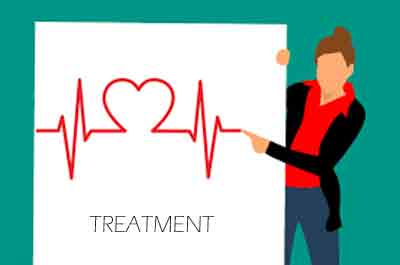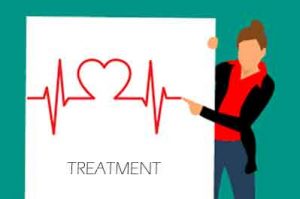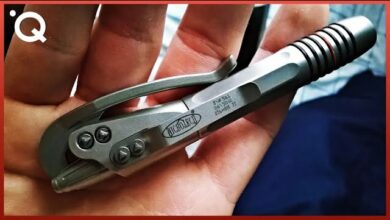Atrial Fibrillation (Afib/AF): Prevention & Treatment Guide

The goals of atrial fibrillation (AF or AFib) treatment begin with a proper diagnosis obtained through an in-depth examination by a physician. The examination usually includes questions about your history and often an EKG or ECG. For some patients, a comprehensive electrophysiological study may be required.
Prevention and risk reduction
Although no one can guarantee that a stroke or blood clot may never occur, but there are ways to reduce the risk of these problems.
After diagnosing a patient with atrial fibrillation, ideal goals may include the following:
- Restoring the heart to a normal rhythm (called rhythm control)
- Reduce excessively high heart rate (called rate control)
- Prevent clots (called prevention of thromboembolism, such as stroke)
- Control risk factors for stroke
- Prevent other heart rhythm problems
- Prevent heart failure
Get the groove back
In order to avoid atrial fibrillation, and thus reducing your risk of stroke, can be as simple as giving up your morning coffee. In other words, some cases of AFib are just as severe as the underlying cause. If hyperthyroidism is the cause, treating the thyroid disease may be enough to make the AFib go away.
Doctors can use a variety of different medications to help control the heart rate during atrial fibrillation.
“These drugs, like beta-blockers and calcium channel blockers, work at the AV node,” says Dr. Andrea Russo of the University of Pennsylvania Health System. “They slow down the heart rate and can help improve symptoms. However, they do not “cure” the rhythm disorder, and patients will continue to need medication to prevent stroke while they have atrial fibrillation.”
What are the treatment guidelines for atrial fibrillation?
Medical guidelines are written by a panel of experts to document the science that helps healthcare providers choose the right treatments. The guidelines spell out what is proven most helpful to the greatest number of people. Although the guidelines for atrial fibrillation are about 170 pages long, there are some basic decisions outlined in the treatment guidelines that every AFib patient should understand.
-
- How will I prevent stroke?
Depending on your risk, you will likely either need some type of antithrombotic medication (such as warfarin, one of the new direct-acting oral anticoagulants or DOACs – dabigatran, apixaban, rivaroxaban or edoxaban) or maybe aspirin. - Do I need anticoagulant treatment?
Are there other lifestyle changes that prevent strokes? What is my risk according to the CHA 2 DS 2 –VASc scale?- C : Congestive heart failure
- H : Hypertension
- A : Age (over 75)
- Diabetes
- S : Stroke (previous episode)
- V : Vascular disease (previous heart attack, peripheral arterial disease, or aortic plaque)
- A : Age 65-74
- S : Sex (female)
- Are there options to control my heart rate and this irregular heart rhythm?
Depending on your medical history and risk of future stroke, there are several options that you and your health care professional should discuss in order to manage your AFib.
- How will I prevent stroke?
Watch Video: Living with Atrial Fibrillation (AFib)
TREATMENT OPTIONS
 The severity, any other underlying medical issues you might have, and the length of the atrial fibrillation will determine the best treatment options for you. In addition to knowing your goals, you will want to discuss your treatment options and take an active role in your plan.
The severity, any other underlying medical issues you might have, and the length of the atrial fibrillation will determine the best treatment options for you. In addition to knowing your goals, you will want to discuss your treatment options and take an active role in your plan.
Treatment options may include the following:
- Medicines
- non-surgical procedures
- Surgical procedures
Clinical trials
Clinical trials are scientific studies that determine if a new medical advance can help people and if it has harmful side effects. Find answers to common questions about clinical trials in our Guide to Understanding Clinical Trials.
Non-surgical procedures for atrial fibrillation (AFib or AF)
Electrical cardioversion – the rhythm reset
Electrical cardioversion is a procedure in which the patient is given an electrical shock to the outside of the chest (under mild anesthesia) through paddles or patches. The shock can be used to “reset” the heart to a normal rhythm. The procedure is similar to defibrillation, but much lower levels of electricity are used.
The decision to use electrical cardioversion
Your doctor may recommend transesophageal echocardiography (TEE) as a first step. TEE involves the patient swallowing a small ultrasound device that allows the medical team to see inside your atria to detect blood clots.
If you already have clots in the atria, you will need protection from increasing your stroke risk. For this reason, your healthcare provider may recommend that you take a *blood thinner before having an electrical cardioversion procedure. Electrical cardioversion often successfully restores regular heart rhythm, but for some patients their atrial fibrillation may return. In many instances, anti-arrhythmia medications are needed indefinitely to keep the heart’s rhythm and rate in the best range.
Radiofrequency ablation or catheter ablation
Ablation is done to treat cardiac arrhythmias when long-term medications or electrical cardioversion are not the best option or have not been effective. Before surgical ablation, electrical mapping of the heart is performed. An electrically sensitive catheter is used to map the heart muscle and the source of the heart’s “extra” electrical activity. The mapping tells the doctor which areas of the heart are generating the problematic electrical signals that interfere with normal heart rhythm.
How is an ablation performed?
A catheter (thin, flexible tube) is inserted into the patient’s blood vessels and slowly guided to the heart. The doctor carefully destroys the dysfunctional tissue with the energy (radiofrequency, laser, or cryotherapy) delivered through the catheter so that the areas that are causing problems heal. Scarred areas will no longer send abnormal signals. If the procedure is correct, the heart returns to normal rhythm. However, in some cases, atrial fibrillation may come back. On some occasions, it may be necessary to repeat the ablation procedure several times. This minimally invasive procedure generally has a short recovery period. Patients are usually given a short course of antiarrhythmic drugs until the procedure takes effect.
The most common types of ablation to treat AF include the following:
- Isolation of the pulmonary veins (ablation for AVP). In some patients with AF, fibrillation occurs due to extra electrical currents in the pulmonary veins. During this procedure, the tip of the catheter is used to destroy the tissue that is sending the extra current, and in most cases, normal heart rhythm is restored.
- Ablation of the AV node with a pacemaker. In other AF patients, the trigger for AF occurs at the AV node (the place where electrical signals pass from the atria to the ventricles). The catheter is placed near the AV node and a small area of tissue is destroyed. A pacemaker is then implanted to restore and maintain the normal rhythm of the heart.
Surgical procedures for atrial fibrillation (AFib or AF)
Pacemaker
A pacemaker is a small electrical device implanted in the body with wires that go to the heart to regulate the heartbeat. It is implanted under the skin near the collarbone and sends out an electrical signal to maintain a steady rate of contraction in the heart. Some pacemakers sense when the heartbeat is too fast or slow and send impulses that help the heart return to the proper heart rate and rhythm.
Open heart maze technique
Maze heart surgery is a complex procedure in which a surgeon creates small cuts in the upper part of your heart. The cuts are then stitched together and scar tissue forms. The scars interfere with the transmission of electrical impulses that can cause AFib. Normal heartbeat is then restored.
Lifestyle strategies for atrial fibrillation (AFib or AF)
What can I do to prevent or reduce the risk of atrial fibrillation (AFib)?
To reduce your risk for the onset of AFib, maintaining a heart-healthy lifestyle is always your best option. If you have been diagnosed with AFib, take medications if they are prescribed for you, and get proper treatment and management of your condition so you can reduce the risk of AFib’s harmful consequences.
What can I do to reduce the risk of having complications associated with atrial fibrillation?
- Get regular physical activity
- Follow a heart-healthy diet that is low in salt, saturated fat, trans fat, and cholesterol
- Treat high blood pressure
- Avoid excessive amounts of alcohol and caffeine
- No fume
- control cholesterol
- Maintain a healthy weight
All of these goals are helpful in preventing or reducing the risk of heart disease and will help keep your circulatory system in top condition.
Other underlying conditions may need treatment because they can contribute to the onset of atrial fibrillation:
- High blood pressure (hypertension)
- Sleep apnea
- Thyroid disease (hyperthyroidism)
- Diabetes
- chronic lung disease
- Other heart disease (heart attack , valve disease , or heart failure )
- Family background
- Obesity
What can I do to prevent or reduce the risk of having a stroke?
The risk of stroke in the AFib patient is as much as 5 times greater than that of the person without the heart disease.
Receive treatment
The treatment of AFib is essential to prevent and reduce the risk of suffering a stroke.
Learn about additional risk factors
Other examples of risk factors for having a stroke include the following:
- History of high blood pressure
- Advanced age
- Stroke or transient ischemic stroke
- Diabetes
- heart disease
- Family background
- Obesity
- smoking
Commit to a heart-healthy lifestyle
The good news is that up to 80 percent of strokes can be prevented. You can control risk factors through lifestyle changes and by following your doctor’s instructions for treating other conditions.





